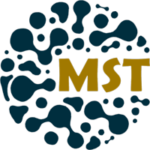Defect-Controlled Hypersound Propagation in Hybrid Superlattices
As materials science meets solid state physics, new functional periodic structures coined phononic crystals are realized. The architecture of finite hybrid superlattices governs their band structure at high frequencies. Controlling sound propagation by structural design is a long standing goal in science and technology. A few examples are the whispering galleries that channel audible sound […]
Mesoporous Au TiO2 nanoparticle assemblies as efficient catalysts for the chemoselective reduction of nitro compounds
In this article, we demonstrate novel mesoporous Au-loaded TiO2 nanoparticle assemblies (Au-MTA) as high-effective catalysts for the selective transformation of nitroaromatics into the corresponding aryl amine products. These materials feature a three-dimensional open porous structure consisting of interconnected uniform gold and TiO2 nanoparticles, large internal surface area (ca. 104 120 m2/g), and narrow mesopores (ca. […]
Complex Oscillatory Yielding of Model Hard-Sphere Glasses
The yielding behavior of hard sphere glasses under large-amplitude oscillatory shear has been studied by probing the interplay of Brownian motion and shear-induced diffusion at varying oscillation frequencies. Stress, structure and dynamics are followed by experimental rheology and Browian dynamics simulations. Brownian-motion-assisted cage escape dominates at low frequencies while escape through shear-induced collisions at high […]
Residual Stresses in Glasses
The history dependence of glasses formed from flow-melted steady states by a sudden cessation of the shear rate is studied in colloidal suspensions, by molecular dynamics simulations and by mode-coupling theory. In an ideal glass, stresses relax only partially, leaving behind a finite persistent residual stress. For intermediate times, relaxation curves scale as a function […]
Second most downloaded paper from ChemCatChem in October 2013.
Silver selectively catalyzes the hydrogenation of propyne to propene, and the activity is maximal over 4.5 nm nanoparticles. The rate of propene production correlates well with the density of B5 sites, which suggests that the latter are potential active centers in the reaction. The hydrogenation follows an associative scheme, featuring the activation of H2 directly […]
Glassy States in Asymmetric Mixtures of Soft and Hard Colloids
By employing rheological experiments, mode coupling theory, and computer simulations based on realistic coarse-grained models, we investigate the effects of small, hard colloids on the glassy states formed by large, soft colloids. Multiarm star polymers mimic hard and soft colloids by appropriately varying the number and size of their arms. The addition of hard colloids […]
Synthesis of structurally well-defined and liquid-phase-processable graphene nanoribbons
The properties of graphene nanoribbons (GNRs) make them good candidates for next-generation electronic materials. Whereas top-down methods, such as the lithographical patterning of graphene and the unzipping of carbon nanotubes, give mixtures of different GNRs, structurally well-defined GNRs can be made using a bottom-up organic synthesis approach through solution-mediated or surface-assisted cyclodehydrogenation reactions. Specifically, non-planar […]
Harnessing photochemical internalization with dual degradable nanoparticles for combinatorial photo chemotherapy
Light-controlled drug delivery systems constitute an appealing means to direct and confine drug release spatiotemporally at the site of interest with high specificity. However, the utilization of light-activatable systems is hampered by the lack of suitable drug carriers that respond sharply to visible light stimuli at clinically relevant wavelengths. Here, a new class of self-assembling, […]
Polariton mediated energy transfer between organic dyes in a strong-coupled optical microcavity
Strongly coupled optical microcavities containing different exciton states permit the creation of hybrid-polariton modes that can be described in terms of a linear admixture of cavity-photon and the constituent excitons. Such hybrid states have been predicted to have optical properties that are different from their constituent parts, making them a test bed for the exploration […]
Controlled Hydrogel Fiber Formation: The Unique Case of Hexaphenylbenzene-Poly(ethylene glycol) Amphiphiles
Bundles of fibers of hexaphenylbenzene-PEG derivatives in aqueous solutions are inferred from polarized and depolarized light scattering. The water uptake behavior and the self-assembled structures can be controlled by changing the length of the PEG chains. With shorter PEG chains, the objects contain less water and the density of the self-assembled structures is higher. From: […]

